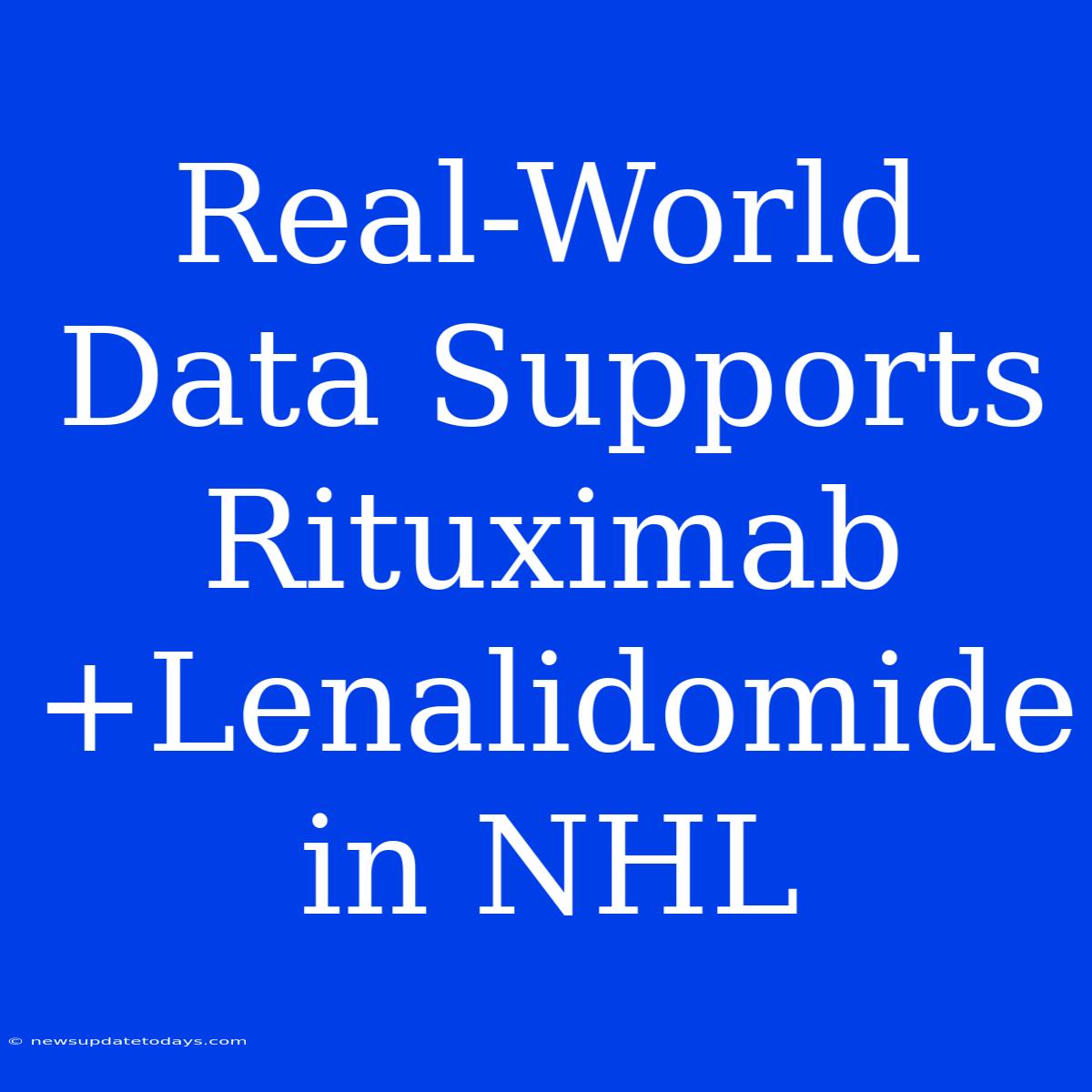Real-World Data Confirms Rituximab + Lenalidomide Efficacy in NHL
Non-Hodgkin lymphoma (NHL) treatment is constantly evolving, with new combinations and approaches emerging. While clinical trials provide crucial initial data, real-world evidence (RWE) is vital to understanding the effectiveness and safety of therapies in broader patient populations. This article examines real-world data supporting the efficacy of the combination of rituximab and lenalidomide in treating NHL.
The Power of Real-World Evidence in Oncology
Clinical trials, while rigorous, often include highly selected patient groups. Real-world data, collected from routine clinical practice, offers a more nuanced perspective, reflecting the diversity of patients and their treatment experiences. This is particularly crucial in oncology, where patient characteristics can significantly influence treatment response. RWE helps to confirm the findings of clinical trials in a broader context and can identify potential benefits or risks not initially observed.
Rituximab + Lenalidomide: A Promising Combination
The combination of rituximab (a monoclonal antibody) and lenalidomide (an immunomodulatory drug) has shown promising results in clinical trials for certain types of NHL. This combination targets different aspects of the disease, leading to a potential synergistic effect. Rituximab depletes B-cells, a significant component of many NHLs, while lenalidomide modulates the immune response and directly inhibits tumor cell growth.
Real-World Studies: Validation and Insights
Several real-world studies have now corroborated the positive findings from clinical trials. These studies, often involving large patient cohorts treated in various settings, provide additional evidence regarding:
-
Efficacy in Diverse Patient Populations: RWE studies show that the rituximab + lenalidomide combination is effective across a wider range of patient characteristics than initially observed in clinical trials, highlighting its potential as a valuable treatment option for a broader group of NHL patients.
-
Long-Term Outcomes: Real-world data allows for the assessment of long-term treatment outcomes, including progression-free survival (PFS) and overall survival (OS), offering a more complete picture of the treatment’s impact beyond the timeframe typically evaluated in clinical trials.
-
Safety Profile in Real-World Settings: RWE studies also provide valuable information on the safety profile of the combination therapy in a more diverse and representative patient population. This allows for a more accurate assessment of the potential adverse events and their management in routine clinical practice.
-
Comparative Effectiveness: Real-world data can be used to compare the effectiveness of rituximab + lenalidomide with other established treatment regimens for NHL, informing treatment decisions based on individual patient needs and clinical context.
Limitations of RWE
It's important to acknowledge limitations associated with real-world data. Data collection methodologies can vary across studies, potentially affecting comparability. The absence of randomization and strict control inherent in clinical trials can introduce bias. However, when properly analyzed and interpreted, RWE significantly complements clinical trial data, providing a comprehensive understanding of the true impact of therapies in everyday clinical practice.
Conclusion
Real-world evidence strongly supports the efficacy of rituximab + lenalidomide in the treatment of NHL. This combination therapy demonstrates effectiveness and safety across diverse patient populations, as reflected in multiple RWE studies. While further research is ongoing, the accumulating real-world data continues to solidify the clinical value of this regimen in the management of NHL. Clinicians should continue to consider this combination as a valuable treatment option, especially when evaluating the comprehensive data from both clinical trials and real-world studies. Further research will continue to refine our understanding of the optimal use of rituximab + lenalidomide in the diverse landscape of NHL subtypes.

